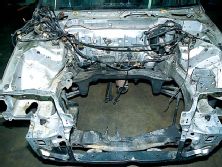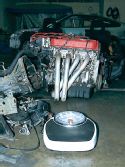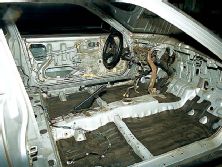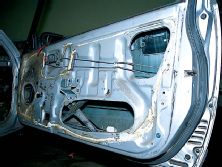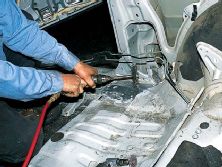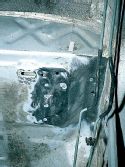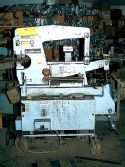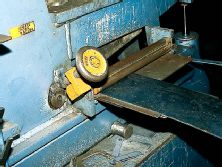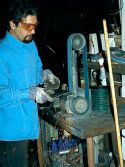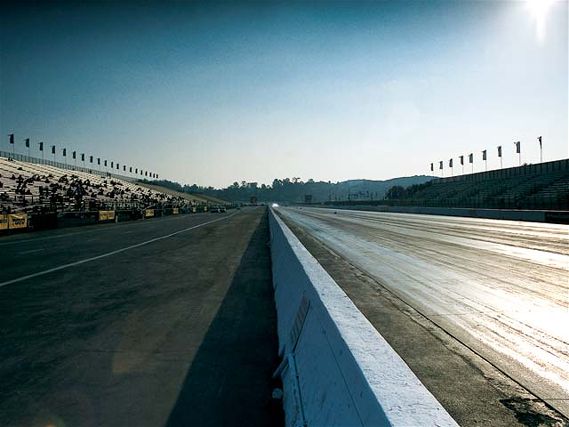 | The Straight Story: Part One
| The Straight Story: Part One
Honda Tuning demystifies the effort and expense that go into creating a competitive all-motor drag car by building our own CRX racer. For chapter one we cover weight reduction, roll bar installation, and the first step to squeezing the most out of our GS-R powerplant: sleeving.
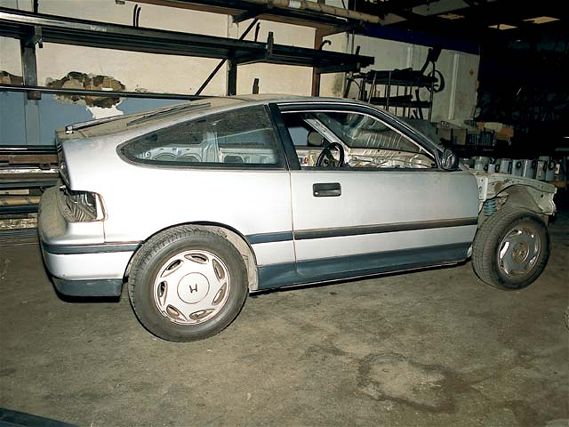 | Relatively speaking, our project medium, an '88 CRX, is a common but accommodating dragging platform. Generally, engine swaps are straightforward and there's no shortage of aftermarket race parts available for the mighty mite.
| Relatively speaking, our project medium, an '88 CRX, is a common but accommodating dragging platform. Generally, engine swaps are straightforward and there's no shortage of aftermarket race parts available for the mighty mite.
In the realm of drag racing, a single straight strip of road measuring 1,320 feet separates the grain from the chaff. To successfully traverse that road, you not only need wits and a lead foot, you also need the right machine. This is a game of tenths- and hundredths-of-a-second, after all; stage with an ill-equipped bucket and your day could end real quick.
It seems a romanticized description of a pretty straightforward (pardon the pun) pastime, but the fact of the matter is if you don't run an automobile that is fast, agile, and, perhaps most importantly, safe, your future in drag racing is doubtful. But just what does it take to make a car that's competitive? We were wondering that very thing when we came up with this crazy idea.
Our stated objective is a simple one: build a 1988 CRX Si into a naturally aspirated, 12-second dragstrip contender. In the pursuit of this objective we will cover everything from chassis and engine prep to testing on the dyno and at the track. Plus, we will match up against other cars at events throughout the greater Southwest and bring you the results.
Now we can already hear your first question: Hasn't that been done already? If you are a regular reader of HT, you know that just recently we published a feature on all-motor sensation Erick Aguilar, who is just about to break the nines in his Civic, so why 12 seconds? Why not 11, or 10?
Quite simply, we wanted to make the project believable and attainable. We could have easily used the magazine's influence to get a newer platform, then utilize some high-profile shop to build us a tuned monster that would smoke others right out of the chute, but we really wanted you to see every step, right down to the last torqued bolt and final dyno pull. We also want you to know that drag racing is by no means a cheap sport. This project is but a starting point; there's plenty more you could do to make the car faster, but it'll come with a price. If you want to walk the walk, you will definitely need to kick down serious green.
That being said, we do have an accomplice in this endeavor that will be aiding us throughout the project's life. Serenity Sound Performance is a renowned audio and tuner shop in Fountain Valley, Calif., that has a name for building sick custom show cars. Proprietor Thai Nguyen is actually one of the visionaries behind this enterprise and has worked tirelessly at tracking down manufacturers that would be appropriate and amenable to our cause.
We have also largely relied on the generosity of many other contributing players, without whom this project could not be possible. One of them is Golden Eagle Manufacturing in San Dimas. The family-owned company has been around 25 years and began as an aerospace manufacturer, working with defense contractors like Hughes and Raytheon. Hit hard by post-Cold War defense spending cuts, GE has shifted its emphasis to engine prep, specifically sleeving and assembly, and has built itself a reputation doing work for the likes of Bergenholtz, Kubo, and Leone. If you built blocks rated to handle 60 psi of boost, though, you'd be pretty popular too.
But first we head south to San Diego to another family-owned operation with motorsports in its veins, Autopower Industries. The company builds bolt-in and weld-in roll bars and cages primarily for road race applications, although drag racing is nothing foreign to them either. In fact, co-owner Rick White is a drag racing hobbyist, running a nostalgia top-fuel dragster of his own when he has time, and company founder Nolan White happens to be the holder of the land-speed record for piston-driven cars. Tragically the elder White lost his life last year when he was trying to break his own record, but his sons Rick and brother Don are carrying on the Autopower tradition.
But enough talk. You know where we're at and where we're headed. Time to get wrenching.
Next-->

